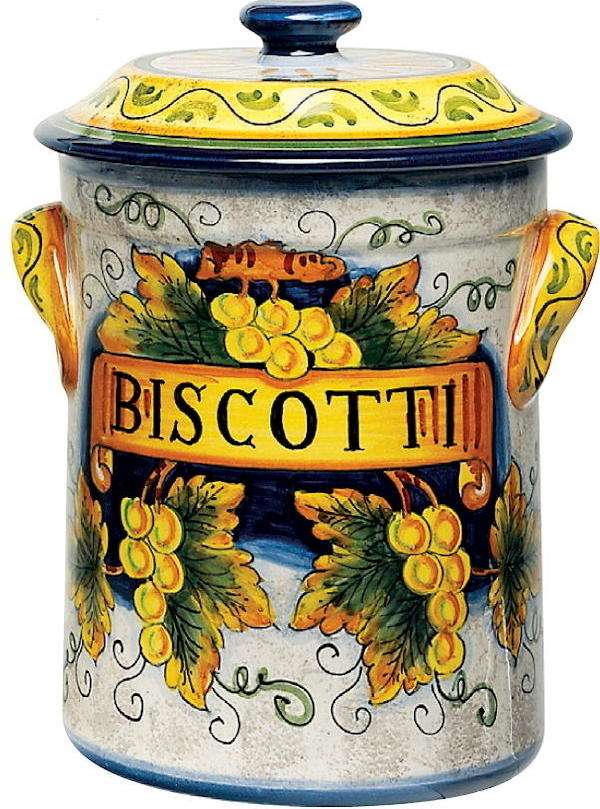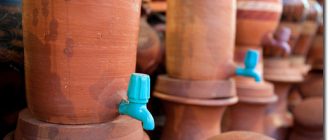Want to buy a real Italian biscotti jar? Do you know what makes Italian biscotti jars different from an ordinary cookie jar? Our guide to biscotti jars gives you the facts & information you want to know.
Italian Biscotti jars can be found in almost every kitchen in Italy. Used mainly for storing cookies, these containers are prized for their looks more than their utility. An Italian Biscotti jar is immediately recognizable by the rich and colorful patterns that are painted on their exterior and a unique shine that is achieved through a special production process practiced in Italy.
History of Italian Biscotti Jars
Italian biscotti jars come under a type of pottery that is collectively known as majolica. Majolica, in turn gets its name from the Spanish Island of Majorca which is the place from where the special technology of producing finely glazed pottery reached Italy. Once established in Italy, the art of majolica craftsmanship flourished and became an integral part of the economy of many cities in the north of Italy. Today there are still several dozen majolica workshops located all across northern Italy where Italian biscotti jars are still produced along with majolica plates, vases and other utensils using the traditional method of production that dates back hundreds of years. Although the precise ingredients involved in the process of producing Italian biscotti jars is a closely guarded secret, the general process of making majolica pottery is outlined below.
Making Italian Biscotti Jars
Firstly, the outline of the Italian biscotti jar is shaped from clay. After being left to dry it is then put in a kiln and baked at a temperature of 750 degrees C. After cooling down very slowly, the biscotti jars are removed the oven and now have a dark reddish color similar to terracotta.
The next stage in the process is what distinguishes Italian biscotti jars from other common types of pottery. A special chemical is used to cover the biscotti jar that will later react with the glazing that is put on and acts as a form of bonding to keep the glaze on the biscotti jar giving it the unique shine for which it is famous.
The painting process which gives Italian biscotti jars their colorful beauty is a true process of artistic endeavor. The difficult part of painting Italian biscotti jars is that the potter has to know that the colors painted on to the pottery will change after the biscotti jars are put in the kiln for the second time. It is often hard to predict exactly what color the Italian biscotti jar will be later on and this is something that only comes with experience.
Finally the Italian biscotti jar is put in the kiln again at a temperature above 700 degrees C where it stays for up to 24 hours. After cooling down, the finished Italian biscotti jar is taken out and only at this point do the splendidly shiny colors for which Italian biscotti jars are known become apparent.





